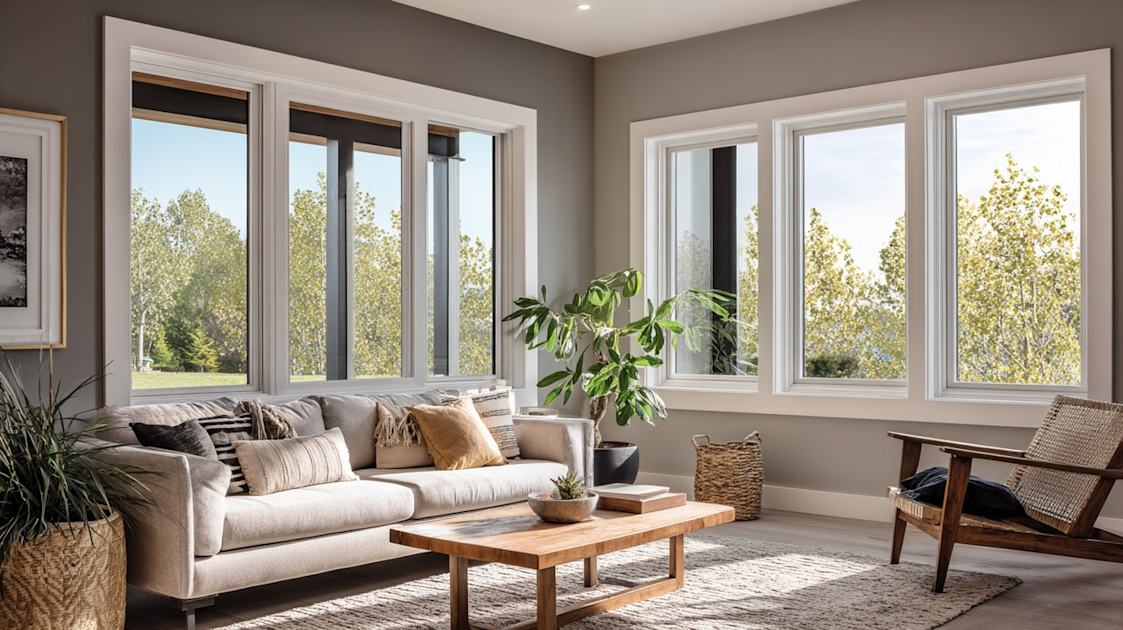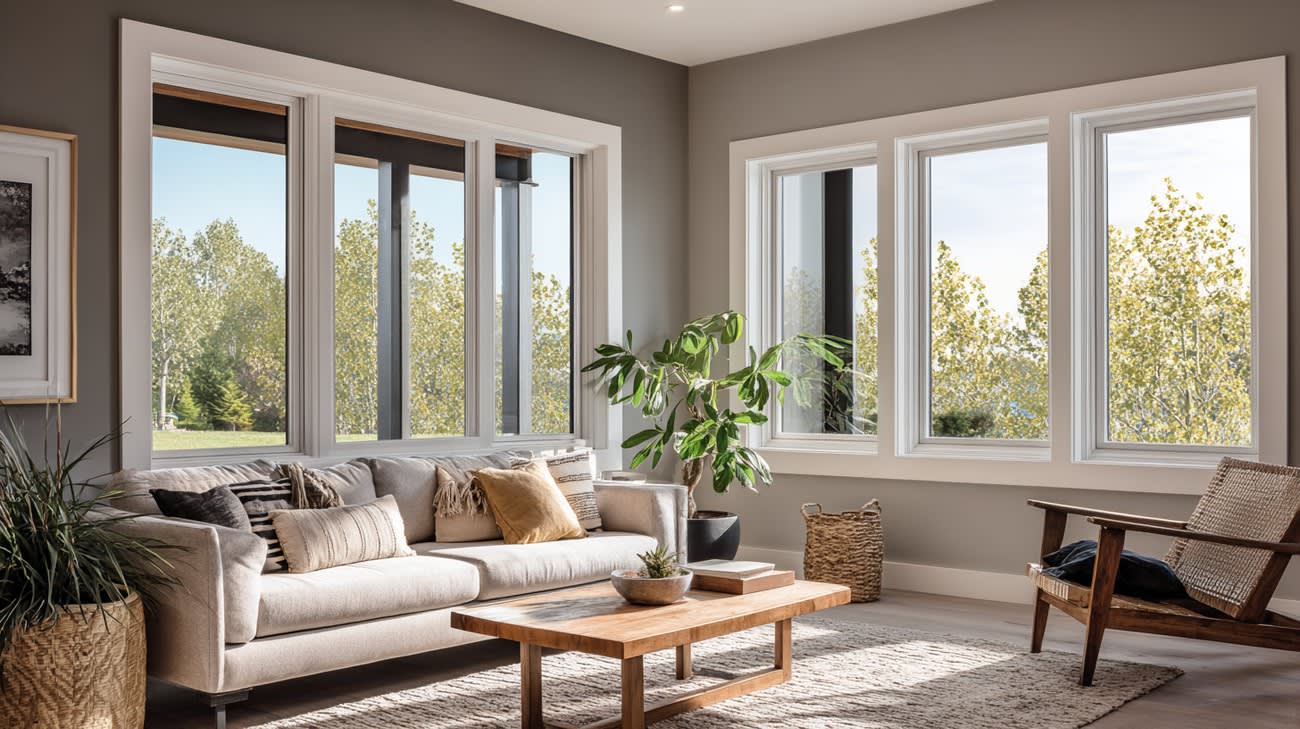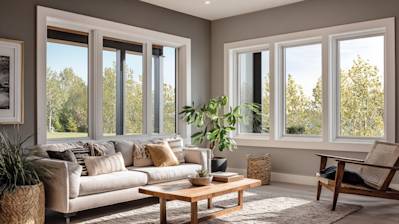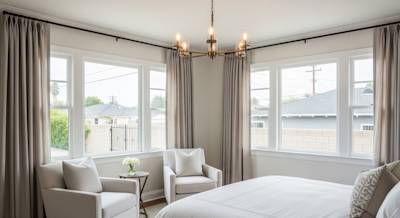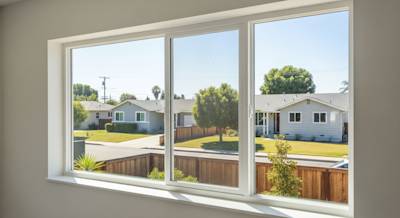In the quest for the perfect windows for your home, two popular materials often come into consideration: vinyl and fiberglass. Both materials offer unique benefits and characteristics that can significantly impact the comfort, energy efficiency, and aesthetic appeal of your living space. In this comprehensive guide, we delve into the world of vinyl vs fiberglass windows, exploring their features, benefits, and considerations for homeowners. Whether you're building a new home or replacing existing windows, understanding these materials will help you make an informed decision.
Understanding Vinyl Windows
What Are Vinyl Windows?
Vinyl windows have been a popular choice for homeowners for decades. They are made from polyvinyl chloride (PVC), a durable plastic material that offers many benefits. Vinyl windows are known for their affordability and low maintenance requirements.
Benefits of Vinyl Windows
- Affordability: Vinyl windows are typically more cost-effective than other window types, making them ideal for budget-conscious homeowners.
- Energy Efficiency: Vinyl offers excellent insulation properties, reducing energy costs by keeping homes warmer in the winter and cooler in the summer.
- Low Maintenance: Unlike wood windows, vinyl does not need painting or staining, and they do not rot or warp over time.
- Variety of Styles: Available in numerous colors and styles, vinyl windows can easily complement the aesthetic of any home.
- Ease of Installation: Vinyl windows are lightweight, making them easier and less expensive to install.
Considerations for Vinyl Windows
While vinyl windows have many benefits, they also come with a few considerations:
- Color Limitations: They are often limited in color options. While there are a few standard colors available, they may not match every homeowner's specific desire.
- Durability Over Time: In extreme weather conditions, vinyl can expand and contract, leading to potential wear and tear.
Exploring Fiberglass Windows
What Are Fiberglass Windows?
Fiberglass windows are crafted from reinforced glass fibers and resin, forming a strong, durable frame. Known for their longevity and superior strength, they are generally considered a step up from vinyl windows in terms of performance.
Benefits of Fiberglass Windows
- Durability: Fiberglass is one of the strongest window materials available, resisting warping, rotting, and corrosion over time.
- Energy Efficiency: With superior insulating properties, fiberglass windows substantially enhance a home's energy efficiency when compared to traditional materials.
- Aesthetic Flexibility: These windows can be painted to match any color scheme, offering flexibility in design aesthetics.
- Eco-Friendly: Fiberglass is a sustainable option, often made from recycled materials and more easily recyclable than vinyl.
- Stability: They expand and contract less with temperature changes, providing a reliable seal over time.
Considerations for Fiberglass Windows
Despite the advantages, fiberglass windows also have some factors to consider:
- Higher Initial Cost: Fiberglass windows usually have a higher upfront cost compared to vinyl, which might deter some budget-conscious homeowners.
- Complex Installation: They are heavier than vinyl, which can complicate the installation process and potentially increase installation costs.
Comparing Performance and Cost
Energy Efficiency Comparison
Both vinyl and fiberglass windows boast excellent energy efficiency, although fiberglass has a slight edge due to its superior insulating properties. Fiberglass frames are narrower, allowing for more glass area, which can improve the solar heat gain and natural light in your home.
Cost Comparison
- Initial Cost: Vinyl windows are generally less expensive initially, with less costly installation due to their lightweight nature.
- Long-Term Investment: Fiberglass windows, while more expensive upfront, may provide more savings in the long run thanks to their durability and energy efficiency.
Longevity and Maintenance
Lifespan Considerations
Fiberglass windows are known for their longevity, often lasting up to 50 years with proper care. Vinyl windows, while durable, typically have a shorter lifespan of 20-30 years.
Maintenance Needs
- Vinyl Windows: Require minimal maintenance, as they do not need to be painted and resist rot and corrosion.
- Fiberglass Windows: Also low-maintenance, but they may need to be repainted occasionally if aesthetics are a concern.
Installation Factors
Ease of Installation
Vinyl windows are easier to handle and install due to their lightweight nature, which can lower installation costs. On the other hand, fiberglass requires more expertise due to its heavier weight and fragility.
- Installer Expertise: Choose an experienced installer familiar with the specific material you're using to ensure a quality installation.
Environmental Impact
Sustainability
Fiberglass windows are generally considered more environmentally friendly due to their longer lifespan and the potential for recycling. They are often manufactured with a higher percentage of recycled materials than vinyl windows.
Energy Efficiency
Both window types contribute to energy savings, reducing the carbon footprint of your home. However, fiberglass's better insulating qualities make it slightly more efficient in extreme climates.
Design and Aesthetic Appeal
Style Options
- Vinyl: Available in basic colors and styles, but customization options are limited.
- Fiberglass: Can be painted almost any color, allowing for customized aesthetics that blend seamlessly with your home design.
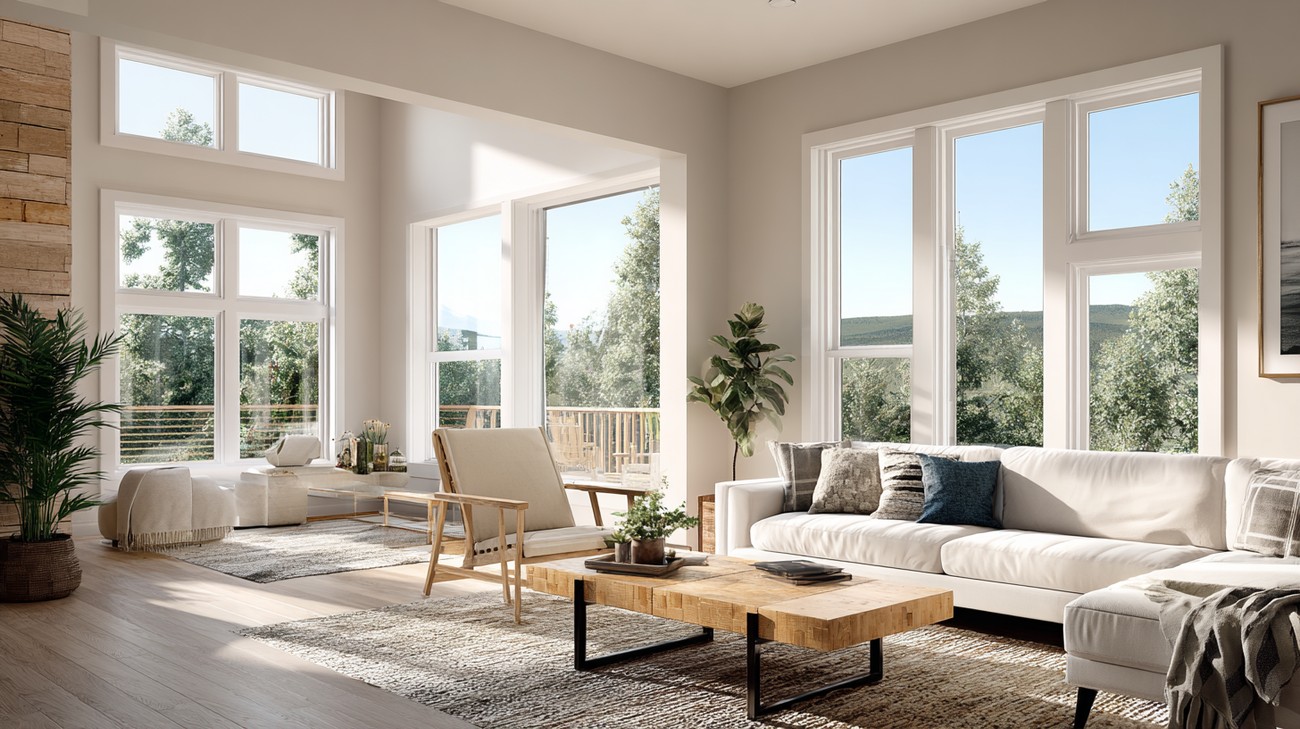
Frequently Asked Questions about Vinyl Vs Fiberglass Windows
Are fiberglass windows more energy-efficient than vinyl windows?
Fiberglass windows are often considered more energy-efficient than vinyl windows. The structure of fiberglass allows it to expand and contract at nearly the same rate as glass panes, reducing the risk of seal failures over time. Furthermore, fiberglass has a higher insulating value which can contribute to the energy efficiency of your home by maintaining indoor temperatures more effectively. Vinyl windows also provide good insulation properties, though they can vary based on the quality of the PVC and construction. When deciding between vinyl vs fiberglass windows for energy efficiency, it often comes down to specific product features and ratings like the U-factor and Solar Heat Gain Coefficient (SHGC).
How do the costs of vinyl and fiberglass windows compare?
Cost is a major consideration when choosing between vinyl vs fiberglass windows. Vinyl windows are typically less expensive, making them a popular choice for homeowners on a budget. They offer a good balance of performance, appearance, and energy efficiency at an affordable price point. Fiberglass windows, while more costly upfront, are considered a long-term investment due to their durability and lifespan. The higher initial cost of fiberglass can be offset by their longevity and lower maintenance requirements over time. When evaluating the cost, it’s important to consider factors such as installation, maintenance, energy savings, and potential property value increases.
Which is more durable: vinyl or fiberglass windows?
When it comes to durability, fiberglass windows generally have the upper hand over vinyl windows. The structure of fiberglass makes it highly resistant to extreme temperature changes, weathering, and impact damage. This strength means that fiberglass windows maintain their structural integrity and appearance longer than vinyl windows. In contrast, while vinyl windows are durable enough for many applications, they can be more susceptible to warping, cracking, or discoloration over time, especially in harsh climates. When considering the long-term durability factor in the discussion of vinyl vs fiberglass windows, fiberglass often comes out on top.
Do vinyl or fiberglass windows offer better aesthetic options?
Both vinyl and fiberglass windows offer various aesthetic options, but there are some distinctions. Vinyl windows come in a wide range of colors and styles, but they cannot be painted, meaning you're limited to the factory colors. This can be a downside if you’re looking to change your home’s color scheme in the future. Fiberglass windows, on the other hand, can easily be painted to match any decor. This flexibility allows homeowners to update their window aesthetics over time without the need to replace them. When deciding between vinyl vs fiberglass windows for aesthetic potential, consider whether future design flexibility is important to you.
How does the maintenance of vinyl windows compare to fiberglass windows?
Maintenance is another aspect where both vinyl and fiberglass windows have their pros and cons. Vinyl windows are virtually maintenance-free, requiring only occasional cleaning with soap and water to keep them looking their best. Their resistance to moisture and rot makes them a low-maintenance choice. Fiberglass windows are also low-maintenance but may require painting to maintain their appearance over time, especially if the original finish fades. However, due to their strength and durability, maintenance requirements are minimal compared to other materials. When deciding between vinyl vs fiberglass windows, consider your willingness to engage in periodic maintenance tasks.
Which type of window is more environmentally friendly, vinyl or fiberglass?
Fiberglass windows are generally considered more environmentally friendly than vinyl windows. The production of fiberglass involves fewer harmful chemicals and relies largely on silica, an abundant natural resource. Additionally, the durability and longevity of fiberglass windows mean they need to be replaced less often, reducing waste over time. While vinyl is recyclable and can be an energy-efficient option, the manufacturing process can release harmful chemicals. For those prioritizing environmental impact when considering vinyl vs fiberglass windows, fiberglass tends to have the edge due to its more sustainable lifecycle.

The Upsides and Downsides of vinyl vs fiberglass windows
Choosing the right type of windows for your home is like picking the perfect outfit—it must fit well and look great while also providing comfort and durability. If you’re torn between vinyl and fiberglass windows, you’re not alone. Both have their loyal fans and a range of benefits that might suit your needs. Let's dive into the pros and cons of each to help you make an informed decision.
Pros of Vinyl Windows
Cost-Effective
Vinyl windows are typically more affordable than fiberglass, making them an excellent choice if you're on a tight budget. They offer great insulation and energy efficiency without breaking the bank.
Low Maintenance
These windows require minimal upkeep. Vinyl doesn't need painting or refinishing, and it resists scratches, fading, and general wear and tear. A simple wash with soap and water occasionally is all that's needed to keep them looking fresh.
Energy Efficiency
Thanks to their excellent insulation capabilities, vinyl windows can help reduce your energy bills. They keep your home cool in the summer and warm in the winter, which is great for both comfort and your wallet.
Versatile Designs
Available in a plethora of colors, styles, and finishes, vinyl windows can easily mimic the appearance of wood, giving you the aesthetic appeal of wooden windows without the associated high maintenance.
Cons of Vinyl Windows
Aesthetics
While vinyl can mimic wood, it might not achieve the high-end look that real wood or fiberglass can provide. Some homeowners might find vinyl windows less appealing in terms of texture and finish.
Durability Concerns
Although generally durable, vinyl may warp or crack over time, especially in extreme temperatures. This can affect the window’s performance and potentially decrease its lifespan compared to other materials.
Pros of Fiberglass Windows
Superior Durability
Fiberglass is one of the most durable materials for windows. It’s able to withstand harsh weather conditions without warping, corroding, or breaking down, leading to a long lifespan that can often surpass vinyl.
Strength and Stability
Fiberglass provides incredible strength, which means it can support larger panes of glass, offering unobstructed views and allowing more natural light into your home without compromising structural integrity.
Energy Efficiency
Similar to vinyl, fiberglass offers outstanding energy efficiency. Its superior thermal performance can lead to significant energy savings, keeping your home comfortable year-round.
Sustainability
Fiberglass is often considered a more environmentally friendly option because it can be made from recycled glass, and its durability means it won’t need to be replaced as frequently as vinyl, resulting in less waste.
Cons of Fiberglass Windows
Higher Cost
The upfront cost of fiberglass windows is generally higher than vinyl. While the long-term benefits can offset this initial investment, the higher price tag might be a dealbreaker for some.
Limited Color Selection
Although you can paint fiberglass, the initial color selection is not as wide as vinyl. If you're someone who loves a colorful selection right away, this might be a factor to consider.
Installation Complexity
Fiberglass windows are more challenging to install due to their rigidity and weight. It's imperative to hire skilled professionals for installation, which can add to the overall cost of your project.
Availability
Fiberglass windows might not be as readily available as vinyl in all areas, limiting choices or leading to longer wait times for customization or specific orders.
Both vinyl and fiberglass windows have their distinct advantages and potential downsides. Your choice will hinge on your budget, aesthetic preferences, and long-term home improvement goals. By understanding the detailed pros and cons of each, you’re on your way to making a savvy decision that suits your needs perfectly.

Comparison
When considering new or replacement windows, vinyl and fiberglass are two popular options. Both materials offer distinct advantages and potential drawbacks across several areas including features, performance, cost, and ideal use cases. Below, we provide a detailed comparison to help you make an informed decision.
Key Features Comparison
| Feature | Vinyl Windows | Fiberglass Windows |
|---|---|---|
| Material Durability | Durable but can warp over time with heat | Extremely durable, no warping |
| Aesthetic Versatility | Available in a variety of colors and finishes; not paintable | Customizable post-install with paint; natural wood-like finish |
| Insulation | High insulation due to multi-chamber frames | Excellent insulation with foam-filled frames |
| Maintenance | Low maintenance; no painting needed | Low maintenance; can be painted if desired |
| Environmental Impact | Made from PVC, a plastic derived from petroleum | Made from glass fibers and non-toxic resin |
Performance Differences
Energy Efficiency: Both vinyl and fiberglass windows offer excellent energy efficiency. Vinyl frames are equipped with multi-chamber designs that can help reduce energy transfer. Fiberglass, however, boasts inherent thermal properties due to its lack of expansion and contraction with temperature changes, making it a superior option for extreme climates.
Durability and Strength: Fiberglass windows outshine vinyl in terms of strength and long-term durability. They are resistant to warping, rotting, and expansion, hazards that can affect the performance and appearance of vinyl windows over time. Therefore, fiberglass windows are often considered more reliable for lasting performance.
Climate Performance: Vinyl windows can perform exceptionally well in moderate climates, while fiberglass is favored in regions with significant temperature swings. Fiberglass windows maintain structural integrity and airtight seals even during extreme temperature variations.
Price Comparison
| Window Type | Average Cost per Window (Installed) |
|---|---|
| Vinyl | $300 - $700 |
| Fiberglass | $600 - $1,200 |
Vinyl windows are generally more budget-friendly and provide a cost-effective solution for homeowners seeking good thermal performance and a range of design options. Fiberglass, while more expensive upfront, offers long-term savings through energy efficiency and minimal maintenance requirements.
Best Use Cases for Each
Vinyl Windows: These are best for homeowner projects where budget constraints are a significant consideration, and where moderate climate conditions prevail. Vinyl windows are ideal for quickly elevating the energy efficiency of a home without incurring high upfront costs. They are also recommended for homeowners looking for low-maintenance window solutions.
Fiberglass Windows: These are preferable for those living in climates with harsh weather conditions and significant temperature fluctuations. They are well-suited for homeowners who value durability, want to reduce long-term maintenance costs, and prefer the option to customize window colors over time. The higher initial investment can be justified by long-term energy savings and longevity.
Bottom Line Recommendation
Both vinyl and fiberglass windows offer compelling advantages and making a choice depends largely on factors such as climate, budget, and long-term homeownership plans.
For cost-effective projects prioritizing immediate budget concerns and an easy installation process, vinyl windows are a fantastic choice. Their affordability, coupled with adequate insulation properties make them a common choice for many residential settings.
For those who can afford the higher initial cost and desire long-term value, fiberglass windows are a superior option. They combine exceptional durability with excellent energy efficiency, making them suitable for variable climates and elevating the long-term energy performance and curb appeal of the home.
Ultimately, the choice between vinyl and fiberglass should be aligned with the specific needs of your living conditions and personal priorities. Consider factors like climate, home architectural design, maintenance willingness, and budget constraints to select the best material for your windows.
The content provided here is intended for informational purposes only and should not be considered professional advice. We recommend consulting with a qualified specialist before making any decisions related to your project. Pricing, product availability, and specifications are subject to change without notice. Any references to specific brands or products represent our opinions and do not constitute official endorsements or guarantees of performance.

